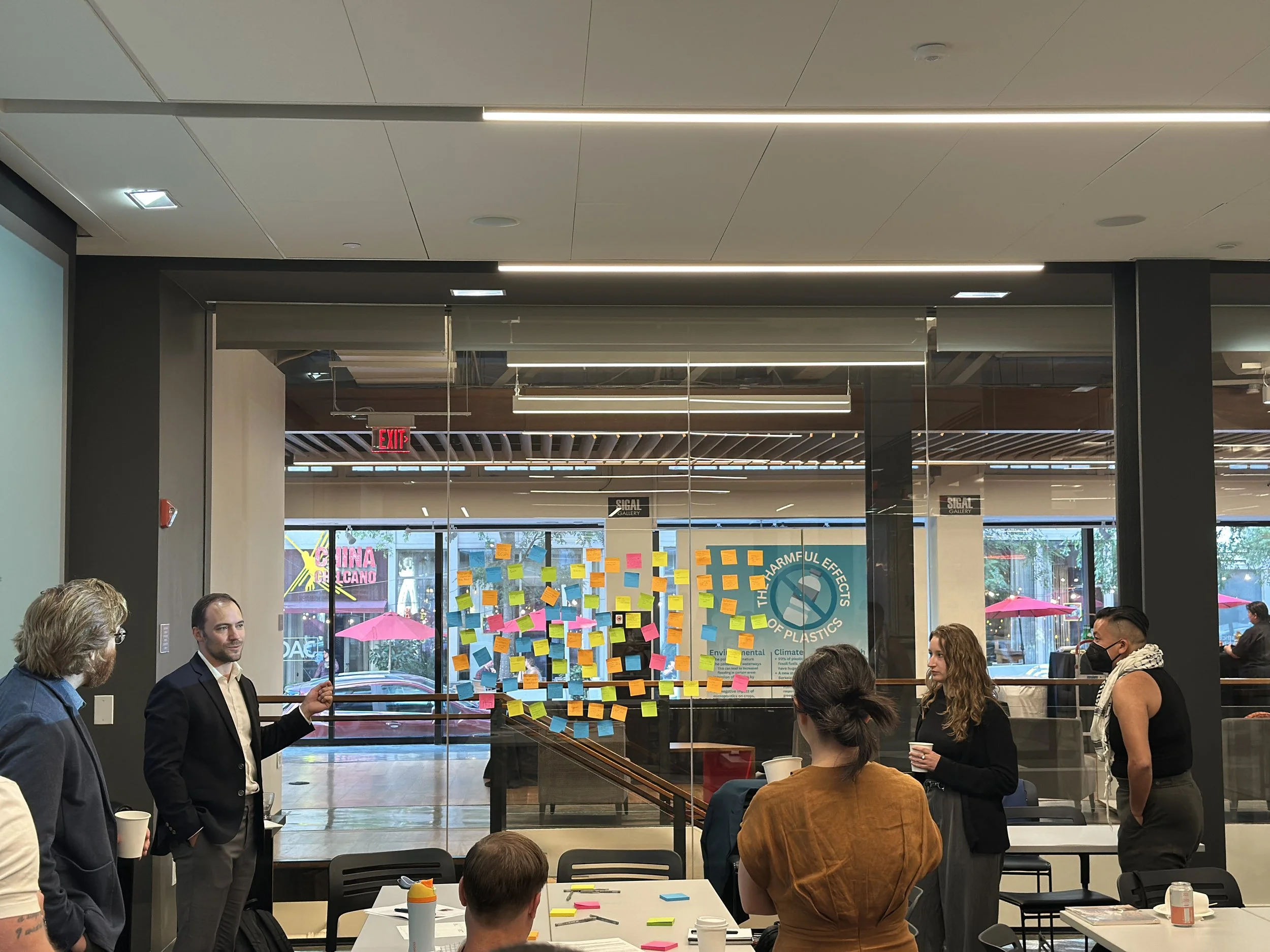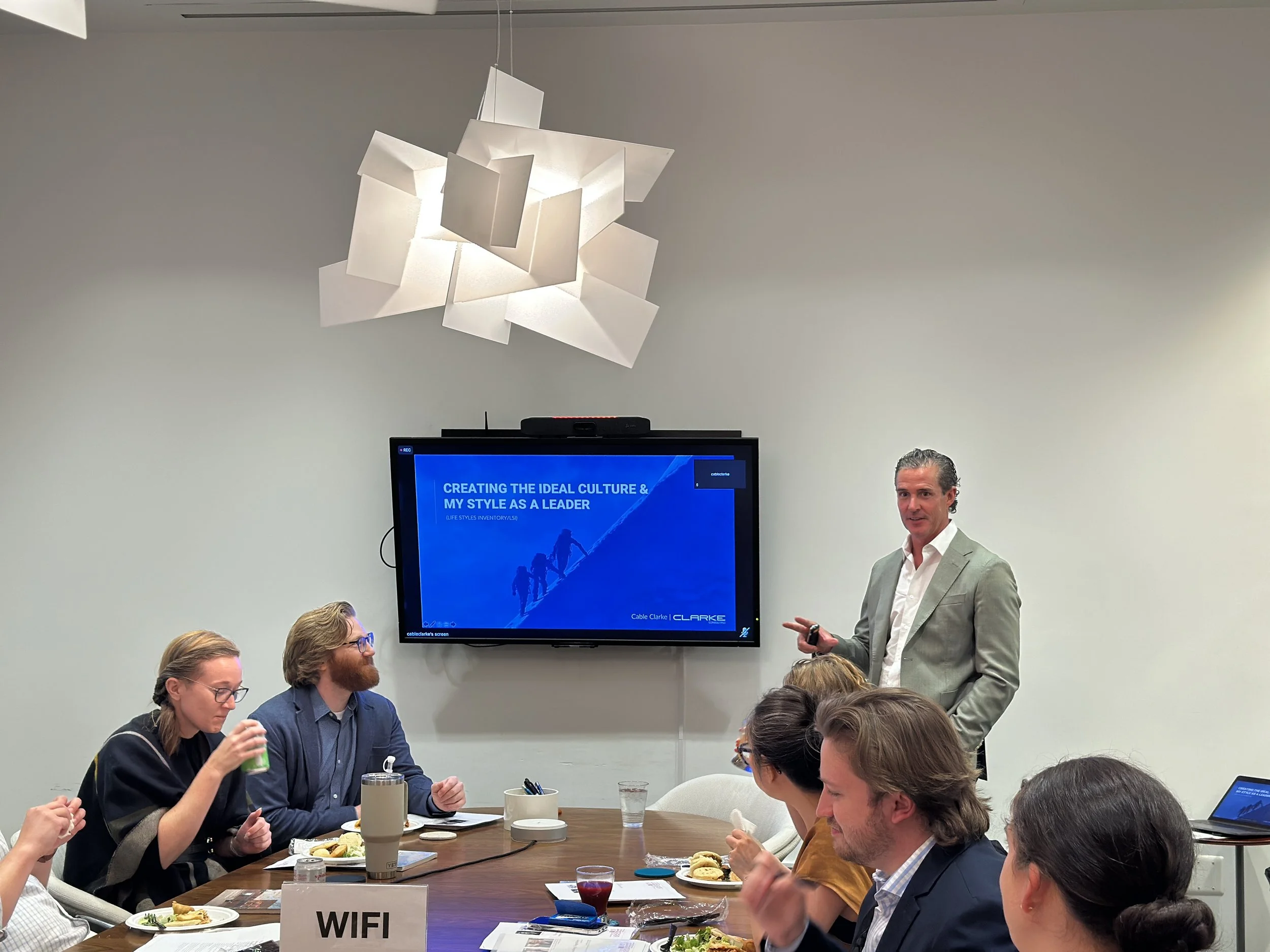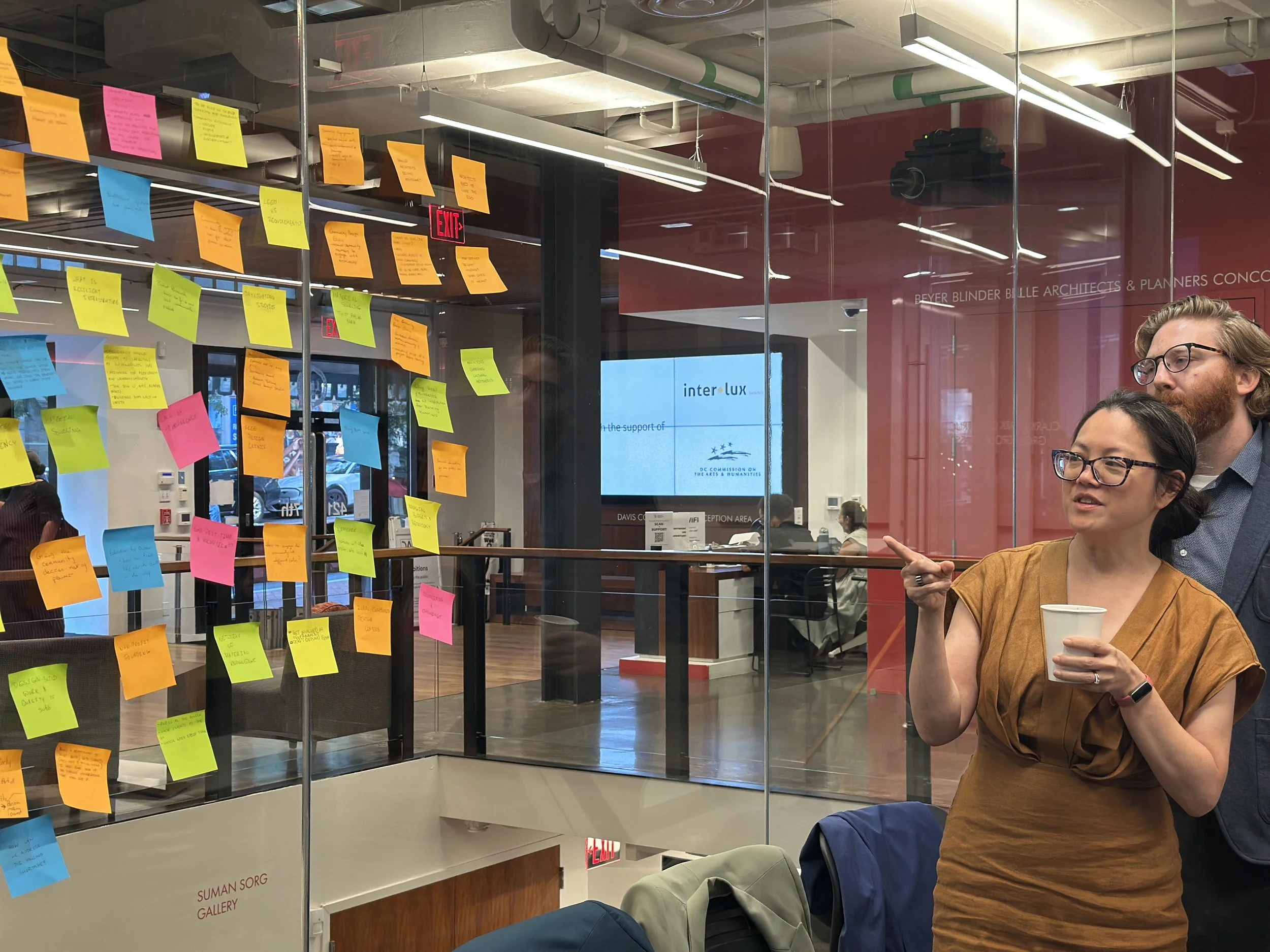S8: Practice Reimagined: Integrating and Expanding Our Impact
September 12, 2025
Location: District Architecture Center
Led by: Sarah Rivard & Josh Seiler
This session invited scholars to reflect on the future of the architectural profession through a series of roundtable discussions and activities. Guided by diverse leaders, the session examined key themes of community engagement, environmental resiliency, BIM integration, sustainable material sourcing, and advocacy. With an emphasis on collaboration and open dialogue, participants considered how architects can adapt, lead, and innovate to create a more resilient, inclusive, and forward-thinking profession.
Act 1: LSI – Life Styles Inventory
Cable Clarke
Cable Clarke returned to help the cohort reflect on their second round of Life Styles Inventory assesments to measure personal growth sincne the program’s outset. Scholars were able to reassess LSI’s twelve different qualties and consider how their leadership profiles had shifted over the course of the program. Clarke also reinforced the distinction between an organization’s climate and its culture, underscoring how both shape and are shaped by leadership behaviors. By returning to the LSI framework, scholars deepended their self-awareness and prepared to apply those insights to broader discussion on the furture of practice.
Jack Becker, AIA
Jay Kline, PE, LC
Julia DiMauro
Anna McCorvey, RA, LEED AP BD+C,
Four discussion leaders opened the afternoon by sharing their backgrounds abd perspectives on the future of practice. Jack Becker of BLDUS described how his firm merges vernacular tradition with modern sustainability, employing locally sourced natural materials and a “farm-to-shelter” philosophy in housing and infill projects to create homes in harmony with place, health, and climate. Jay Kline spoke about his work with the National Institute of Building Sciences, emphasizing how the development of BIM standards can drive innovation in the AEC industry and ultimately serve the public interest. Julia DiMauro of the Neighborhood Design Center of Baltimore and Prince George’s County, reflected on how inclusive, community-driven design empowers residents to shape their own neighborhoods, emphasizing the importance of designing with communities rather than strictly for them. Anna McCorvey traced the history of community design before sharing her own work, from creating a mobile engagement cart to her role with the 11th Street Bridge Park. Following these introductions, scholars rotated through small-group discussions with each speaker to engage more deeply with their work and insights.
Act 2: Expanding Your Impact
The session concluded with a collaborative summary exercise that brought together ideas generated throughout the roundtable discussions. Scholar compiled their reflections on sticky notes, organized by each leader’s area of expertise, to visualize the breadth of perspectices on the future of practice. A key theme that emerged was the importance of giving back time and expertise to the community as a meaningful extension of architectural practice. By closing with open dialogue and collective reflection, the session underscored the role of architects as advocates and leaders in shaping a more resilient and inclusive profession.
Jay Kline, PE, LC






